Gondola Lift - Stóg Izerski
Świeradów Zdrój, 11.09.2010
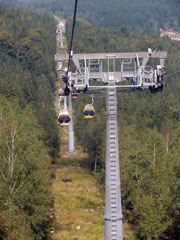
The mountains have always been important to me, and when I was able-bodied, I loved hiking the trails alone or with close friends. During many shorter and longer trips, I got to know the Bieszczady and nearby Sudetes well. After my spinal cord injury, I greatly missed the sense of freedom that always accompanied hiking, as well as the beautiful landscapes that can only be seen in the mountains.
During one of my visits to my friends from university, there was a suggestion in the conversation to go to Świeradów Zdrój – a picturesque town located at the foot of the Izera Mountains. I knew that a modern Gondola Lift had been opened there, which is adapted for people with disabilities and could take me to Stóg Izerski – one of the highest peaks of this mountain range.
Upon arriving in Świeradów and purchasing a ticket, I took the elevator to the level where you board the gondola. The staff was very efficient, and I boarded the cabin without holding up the entire line. The length of the mountain cable car route in Świeradów is 2,171 meters, with a travel time of 8 minutes one way. The lower station is located at an altitude of 617 meters above sea level, while the upper station is at 1,060 meters above sea level, making the elevation difference 443 meters.
After a smooth disembarkation from the gondola, we headed along a very challenging path for wheelchairs to the "Schronisko na Stogu Izerskim" (Shelter on Stóg Izerski). We were very lucky that the weather was sunny that day, allowing us to admire the beautiful view of much of Lower Silesia. Visibility reached over 100 km, and it took us a while to take in the incredible landscape that unfolded at our feet.
After spending a few hours at the peak and enjoying some delicious bigos (a traditional Polish dish), it was time to return home. The descent on the gondola went very smoothly, and after two hours of driving, I happily returned to Legnica.
The trip to Świeradów Zdrój was my first tourism adventure since I suffered a cervical spine fracture. Fourteen years after my unfortunate diving accident, thanks to the kindness of friends, I was able to see my beloved mountains again. I was very pleased that I finally went somewhere and spent the day differently than usual.
I encourage all people with disabilities who use wheelchairs, if you have even the slightest opportunity, to take advantage of tourist attractions that are accessible to those with mobility issues. By being visible in public spaces, we are not just numbers in statistical tables but living people who also want to enjoy life's pleasures. The money spent on adapting facilities for the needs of disabled individuals is not wasted. See you somewhere, someday...
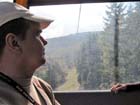
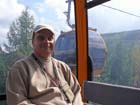
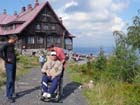
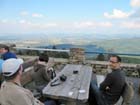

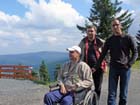
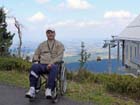
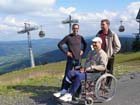
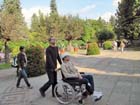
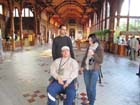

 PL
PL
 DE
DE